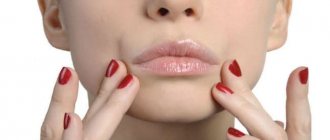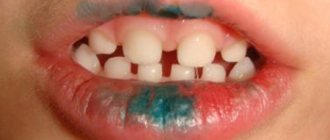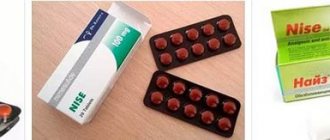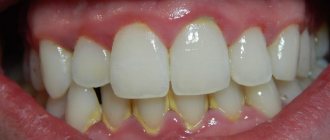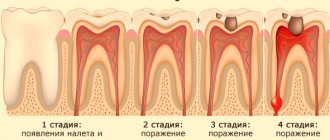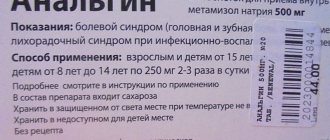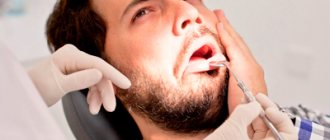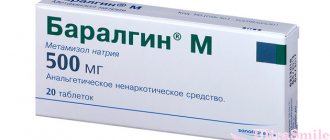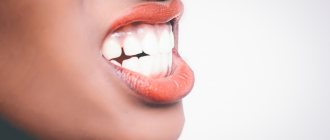Toothache is an unbearable sensation that can strike at night, when there are no painkillers or dentistry at hand. Unfortunately, for toothaches, an ambulance does not come, so you have to eliminate the pain yourself. To relieve pain at home, you can use various folk remedies - from infusions of medicinal herbs to various foods. However, there is one of the most effective methods for quickly blocking pain, which came several decades ago from China - acupuncture. Massage methodology, acting on certain points, allows you to dull painful sensations in almost any part of the body. Toothache in this case is no exception.
Toothache points
What is the effect of acupressure based on?
The acupressure technique is based on the ideas of Eastern sages about the structure of the human body. In ancient China, it was believed that 14 rivers of vital energy Chi flow through the human body. If they do not encounter obstacles, then with their flow they safely carry energy to all internal organs. But if a malfunction suddenly occurs and the organs receive Chi energy in different quantities, the person begins to get sick. Ancient doctors believed that balance could be restored by massaging certain points. This is how the Chinese technique of acupuncture appeared.
According to another Eastern theory, two principles are constantly fighting in the human body: the female Yin - changeable, cold, dark - and the male Yang - constant, warm, light. Balance can be achieved by applying pressure in the right places.
Acupuncture points for toothache
The ancient Chinese identified two massage points for toothache and gave them figurative names.
Point He-gu - “closed gorge”
How to find:
The He-gu point can be detected if you close the thumb and index fingers of your hand - a tubercle forms at this place, and with open fingers - a depression. It is important to compare the description of points on the body from toothache with the pictures.
How to massage:
Press on the toothache point on the hand with the thumb of the opposite hand, moving it up and down, while simultaneously clicking your teeth. Duration: 2 to 3 minutes until the skin turns red. If the tooth hurts on the right, you need to massage the point on the left on the left hand and vice versa, and in case of severe pain, act on both at once. This method is not recommended for pregnant women.
Jia Che points - “cheek cart”
How to find:
these are symmetrical points on the lower jaw. If the jaws are open, the points are located in the cavity; when closed, the points are in the place of convexity of the masticatory muscles.
How to massage:
The massage should be very gentle. First, light pressure with your index finger, then 30 circular movements. You can perform no more than five approaches at a time.
Cause of pain
First, you need to figure out why your tooth might hurt. The tooth itself consists of several types of tissue structure. The hard tissue structure includes the enamel coating of the tooth, cementum and dentin. The pulp represents soft tissue (if this structure is damaged, severe pain occurs). The most common dental ailments that are accompanied by pain include:
- pulpitis;
- periodontitis;
- carious lesions of varying degrees;
- periodontitis.
Attention! Most often, the patient comes with the problem of toothache, which arose as a result of carious lesions of hard tissues. When pathology develops, a cavity forms in the dental element, requiring urgent treatment. If caries is not blocked in a timely manner, the pathological lesion will even affect soft tissue (pulp).
| Disease that causes toothache | Image | Brief description of the pathology |
| Pulpitis | The inflammatory process affects the soft tissue structure of the dental element, resulting in severe pain. A special symptom of this disease is increased pain at night. Pathology can be acute or chronic. If left untreated, it develops into another disease - periodontitis. | |
| Periodontitis | Pathology is determined by damage to periodontal tissue structures. The main symptoms are aching pain and fever. Sometimes there may be swelling, redness of the gum tissue, as well as purulent discharge. | |
| Periodontitis | Pathological damage to the tissues that attach the dental element. In this case, there is a high level of pain, bleeding gums and swelling of the tissues. |
It is important! The occurrence of toothache can be explained by incorrectly installed fillings, mechanical impact on the dental element, or damage to the enamel coating.
The above ailments are a reason to immediately visit the dentist. Indeed, in the absence of therapeutic actions, you can lose a dental element.
In order to wait until an appointment with a specialist, pain is often eliminated by applying pressure to certain points on the body.
Quick and effective point for toothache Yoshiro Tsutsumi
The famous Japanese specialist in alternative medicine, Yoshiro Tsutsumi, studied the technique of acupressure for more than 30 years, as a result of which he wrote the popular book “A Simplified Method for Preserving Health with Finger Exercises.” We are interested in the section that tells you which point to press for toothache.
Te-sanri point
Yoshiro Tsutsumi in his book notes that this is a quick and effective remedy for severe toothache.
How to find:
Stretch your hand in front of you, palm up, at the junction of the palm and wrist, find the metacarpal bone of the thumb, draw a conditional line to the depression in the bend of the elbow, remember this distance. Measure 1/5 of the length of this line from the elbow, this is where the desired point is located. It is located symmetrically on the right and left hands.
How to massage:
the pad of the thumb of the opposite hand. To enhance the effect, Tsutsumi recommends massaging both points at once; to do this, you need to cross your arms, as shown in the figure. Press the point of the right hand for 1 minute with the index and middle finger of the left hand, and on the left hand with the thumb of the right hand. After a pause, cross your arms in the other direction and repeat the exercise.
Does acupressure really help with toothache?
Adherents of traditional medical practice are skeptical about acupressure as a way to relieve pain. There is no scientific evidence of the effectiveness of such methods, and the result, as a rule, is not achieved immediately, which raises doubts among some people. Massaging certain points can reduce painful sensations, but it cannot remove the cause of their occurrence. At the same time, you need to understand that it is impossible to permanently eliminate pain with any painkillers. Massage, like other means, is used only to wait a few hours or days before seeing a dentist.
If you have a severe toothache, it is not always possible to immediately consult a doctor, but you can always do self-massage to relieve the pain at least temporarily. You just need to do it correctly, because... it is necessary to determine the location of the corresponding biologically active points.
History and prevalence of acupressure
Massage techniques are one of the oldest methods of pain relief. These techniques came to modern times from Ancient China and are mentioned in chronicles more than 3000 years ago.
Attention! Observations by Chinese healers indicate that there are certain areas and zones on the human body that reflect the functioning of the internal organs. A targeted effect on these places affects the functions of all body systems. The hands of an experienced massage therapist trained in such techniques can have a beneficial effect on the entire body and improve a person’s well-being.
Acupressure helps relax certain muscles, which can significantly reduce the intensity of pain. One of the main qualities of the technique, which explains its accessibility and prevalence, is that pain relief does not require the intake or use of any substances. Pain relief medications may have contraindications and side effects, and traditional medicine may cause an allergic reaction. Massaging pressure points to relieve toothache has no restrictions on use and is available to any person. In this case, you do not need to take any pills, which, while relieving toothache, can simultaneously have a negative effect on other organs.
The experience of dozens of generations suggests that acupressure can effectively relieve toothache. Why not try these simple techniques that don't require you to buy any extra products and can be used in any situation.
Training in the technique of influencing points for pain relief
Professionals in the field of Chinese acupressure undergo training in the Shaolin Buddhist monastery. Masters in the field of martial arts are trained in the temple, and acupuncture massage techniques are also studied. The internship here takes place in a serious rhythm, every day is scheduled by minutes and hours, and free time is devoted to prayers and reading a huge amount of literature on oriental medicine.
How pain relief occurs during acupressure
Having theoretical data about where the points for relieving toothache are, you can relieve unpleasant symptoms for yourself or help other people. Important!
With correct and precise impact on a specific area, relief occurs within a few minutes. In essence, the effect itself consists of pressing and massaging a certain point with your fingertips in the desired direction.
The relief that comes after a massage, unfortunately, is short-lived. However, even such a break will help you fall asleep the night before a visit to the dentist or relieve unpleasant symptoms on the way to the clinic.
Massage points on the face
How to find:
to the Jia Che point (see above) add two more symmetrical points, which are at the level of the earlobes, not reaching them 3 centimeters.
How to massage:
lightly touch with your index finger 10 times - first on one pair of points, then on the other.
Point 3
Point 3 for toothache relief
The point is located in the depression on the left cheek, at the junction of the upper and lower jaws. When you open your mouth, it can be easily felt. You should press it with your index finger, lightly, 5 times and massage 30 times until the toothache subsides.
Chinese doctors believe that tooth decay does not just happen. Their spoilage is caused by poor bowel function, stomach or kidney problems. You can influence the energy meridian of these organs by massaging the point located between the index and thumb. To enhance the effect of the work, you can use a nut, which you need to apply slight pressure on the point with a circular motion. In total, you need to make 10 presses, and then perform the same action on the other hand. Another important point is located just in front of the earlobes. Stimulating these points with your index finger 10 times will help reduce pain.
Another unpleasant phenomenon is inflammation of the dental nerve, which causes severe pain. You can fight this problem by pressing on the points located under the lower jaw in the place where the diseased tooth is located. You need to influence the points with your thumb 3 times. As soon as the pain begins to subside, you need to massage the temple area, and then press your finger on the cheek above the sore root. The feeling of pain will begin to fade, and the person will be able to safely get to the dentist.
A simple action can provide additional help to your teeth.
You need to accumulate a large amount of saliva in your mouth and massage your gums and teeth with your tongue. Since saliva is an antiseptic, it will remove many bacteria. After this, it is advisable to swallow the saliva, then it will have a positive effect on the stomach. If you do this exercise every day, then trips to the dentist will be less frequent, and your teeth will last longer. Moscow metro station Zvezdnaya, Danube Avenue, 23
Dots on the palm for toothache
How to find:
points on the palm for toothache are located on the back of the hands between the thumb and forefinger, closer to the latter.
How to massage:
make circular movements with the nut - first 10 light movements, then one with strong pressure. Repeat the exercise 3 times.
Types and causes of toothache
Increased sensitivity, or, as experts call it, dental hyperesthesia
This is a condition in which short-term painful sensations occur in one or more teeth, quickly passing after the irritant is eliminated. Aching pain of varying intensity can occur when eating cold or hot food, sour and sweet foods, when inhaling cold air, even when brushing your teeth with a toothbrush. Increased sensitivity of teeth accompanies caries from the very beginning of the process. Hyperesthesia is a symptom of so-called non-carious dental diseases, in which the enamel becomes thinner or completely worn out; enamel hypoplasia, enamel erosion, wedge-shaped defect, pathological abrasion of teeth. The mechanism of pain in these cases is the same - the protective enamel layer is erased, and through the dentin of the tooth, penetrated by a huge number of holes, the neurovascular bundle (pulp) is unhindered by irritants.
Pain during caries and its complications
The carious process can be accompanied by painful sensations from the very beginning, when there is no visible defect yet. As a rule, this is pain when eating cold, sour or sweet foods. The main difference between pain during caries is its rapid cessation after the irritant is eliminated.
If the matter has gone far, and the neurovascular bundle of the tooth (pulp) is involved in the process, the nature of the pain changes. The pain becomes stronger, lasts much longer and becomes paroxysmal. What happens in the tooth pulp? A normal inflammatory process (pulpitis) develops, which is always accompanied by the migration of leukocytes from the blood into the tissue. Fluid forms in the tissues; at the beginning of inflammation, this fluid is transparent, or, as experts say, serous. The next stage is the formation of pus at the site of inflammation, as a result of the destruction of leukocytes. If we remember that the neurovascular bundle is located in a limited space inside the tooth and the resulting serous fluid or pus does not have a free outlet, it becomes clear why toothache due to caries complications is so intense. Patients describe this pain as shooting, throbbing, tearing. Painful attacks are followed by periods of calm - the pain subsides for a short time, when the accumulated inflammatory fluid still finds a way out, usually through the bottom of the carious cavity. This happens again and again. Another feature of pain with pulpitis is its irradiation (spread) to neighboring teeth and even to the ear, temple, or orbit, that is, along the nerve located in the jaw. This occurs with the so-called diffuse pulpitis, when the patient postpones visiting the doctor for some reason and the inflammation affects the entire pulp of the tooth - both its coronal part and the root. It is typical for pulp pain to occur at night, which is associated with the peculiarities of hormonal regulation of nervous activity. The fact is that in the dark, the production of adrenal hormones, which affect a person’s perception of pain, decreases.
Often the patient cannot localize the diseased tooth, and even for a doctor, diagnosis can be difficult, especially if there are several carious teeth.
It would seem that pulpitis will definitely bring the most notorious coward to the doctor. But no, and in our time there are people who prefer to cope with the situation on their own or using folk methods. Indeed, such a hero “courageously” overcomes the period of acute pain, the tooth calms down, and life goes on as usual... For the time being. After all, the carious cavity has not gone away, and the inflamed pulp has not miraculously become healthy. What happens next in a diseased tooth? Processes in the pulp proceed according to all the laws of inflammation - the acute phase is replaced by the chronic phase. Chronic pulpitis can be practically asymptomatic, but, as a rule, it still makes itself felt with attacks of pain that arise from temperature stimuli (a characteristic sign of pulpitis is pain from hot things) or when food gets into the carious cavity.
Long-term inflammation in the pulp becomes a source of toxins for the tissues surrounding the tooth. The first to be affected are the ligaments of the tooth at the very top, where the opening of the neurovascular bundle is located, through which not only toxins, but also microorganisms freely flow outside the tooth. This process is called periodontitis. Inflammation during periodontitis already involves the periodontal tissues and the focus is located in the jaw bone. The process can also be serous and purulent. Pain in acute and exacerbation of chronic periodontitis differs in that it occurs when there is a load on the diseased tooth. The pain increases, unlike pulpal pain, has practically no “light” intervals, is aching, pulsating in nature, and may be accompanied by a headache and increased body temperature. Unlike pulpitis, with periodontitis there are changes in the mucous membrane in the area of the diseased tooth - swelling, redness, fistulas, sometimes the tooth becomes mobile. If the outflow of inflammatory fluid through the tooth canal is disrupted, dangerous complications such as periostitis, abscess, and phlegmon occur.
Pain in teeth of non-odontogenic origin
Sometimes there are situations when other diseases are disguised as toothache. The dentist, as a member of the primary diagnosis, bears great responsibility in such circumstances. In some cases, delay in seeking medical help can lead to serious complications, even life-threatening. Let's look at some of these conditions.
Pain due to otitis media (middle ear disease) can spread to the chewing teeth of the upper jaw on the affected side. In this case, both the teeth and the ear hurt at the same time, and the patient is often unable to localize the pain.
Diseases of the maxillary sinuses (sinusitis): the roots of the chewing group of the teeth of the upper jaw are in close proximity to the maxillary sinus, so the pathological process, for example, acute sinusitis, may be accompanied by pain in the teeth. One of the signs of such pain is that it intensifies when the head is tilted forward.
With angina, pain sometimes appears in the teeth of the lower jaw on the left, radiating to the angle of the jaw; the presence of discomfort or pain behind the sternum along with this, spreading under the left shoulder blade and left arm, facilitates diagnosis.
The so-called migraine-like cluster headache is accompanied by pain in the eye sockets and teeth of the upper jaw.
Trigeminal neuralgia and its separate symptom complex – dental plexalgia. This is a very unpleasant and difficult to treat disease with an ambiguous etiology. The trigeminal nerve, as its name suggests, has three branches. The second and third are responsible for the innervation of the upper and lower jaw, so the pain in both neuralgia and neuritis is localized, according to the patient’s sensations, precisely in the teeth. Pain occurs either for no apparent reason, or when touching certain areas on the face, the so-called trigger zones. The pain can be paroxysmal or constant, pulsating, burning, cutting in nature. If there are several “suspicious” teeth (carious or previously treated), diagnosis can be difficult.
An experienced and attentive doctor, having ruled out a dental cause of pain, will certainly refer you to the appropriate specialist.
How to massage acupuncture points for toothache?
To obtain or enhance the effect of massage, you must follow the following recommendations.
- Focus on the massage, relax, breathe deeply, sit or lie down comfortably.
- Massage the area on the opposite side - it hurts on the right, influence the point on the left, pain on the left - apply pressure on the right.
- After the massage, sit or lie relaxed for a few minutes, and only then return to business.
- Between sessions, maintain a pause of half an hour.
Essential oils of sage, lavender, mint can enhance the effect, and “Star” balm is also suitable. These substances should be applied to the desired points before the massage; they will increase blood flow.

